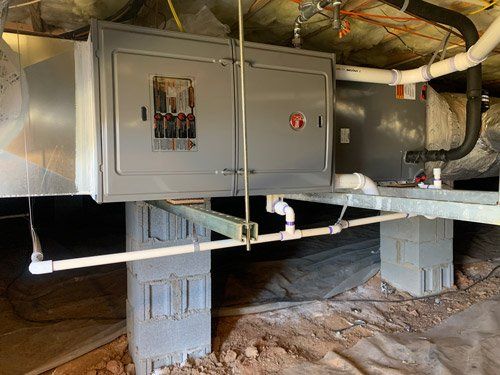The Ultimate Guide to Heating System Installation for a Cozy Home
Heating system setup is a crucial aspect of maintaining a comfy home environment, especially throughout the colder months. As you think about these factors, the question remains: what steps can you take to ensure your heating system offers you well for years to come?
Kinds of Heaters

Gas heaters are the most common choice because of their efficiency and reduced functional expenses. They use natural gas or propane, giving quick heating and constant performance, making them optimal for chillier environments.
Electric heaters, while typically less complicated to mount and preserve, often tend to have greater operational costs. They are typically preferred in areas where gas solution is not available or for homes with existing electric framework.
Oil heaters, though much less usual today, continue to be a practical alternative in certain regions. They burn home heating oil, which can be advantageous during chillier months, however their reliance on oil shipment postures possible obstacles.
Furthermore, there are high-efficiency designs readily available across these types, which can significantly decrease power consumption and utility expenses - furnace installation. Inevitably, understanding these heater kinds will assist house owners choose a system that aligns with their heating needs, budget plan, and power choices
Selecting the Right Dimension
Selecting the appropriate dimension for a heating system is important to making sure ideal efficiency and power effectiveness. An undersized heater will certainly struggle to keep comfortable temperatures throughout the chilly months, resulting in increased damage, higher power expenses, and potential system failing. Conversely, an oversized heating system might cycle on and off too often, resulting in ineffective heating and irregular temperature level distribution within the home.
To establish the appropriate heater size, an estimation understood as the Guidebook J tons calculation need to be performed. This procedure evaluates numerous elements, consisting of the square video footage of the home, insulation degrees, window sizes, and neighborhood climate problems. This comprehensive analysis makes certain that the furnace fulfills the particular home heating demands of the area.

Installment Process Review
In regards to materials, you will certainly need ductwork, insulation, and securing tape to make sure ideal air movement and energy efficiency - furnace installation. It is additionally vital to have a new furnace filter available, together with venting materials, such as PVC pipe or steel flue, depending on the kind of heater being mounted
Safety tools, consisting of handwear covers, goggles, and a face mask, is likewise crucial to secure against dust his comment is here and debris throughout installment. Having all these tools and materials conveniently offered not only enhances the procedure however likewise boosts the safety and security and efficiency of the furnace setup.
Upkeep Tips for Durability
To ensure the durability of your heating system, it is important to apply a regular upkeep schedule that resolves essential elements of the system. Start by changing or cleaning the air filter every one to three months, as a clogged up filter can limit airflow and reduce efficiency. In addition, check and clean up the blower assembly to stop dirt build-up that can impede efficiency.
Next, examine the thermostat setups and rectify if necessary to make sure precise temperature additional reading guideline. Inspect the ductwork for leakages or clogs, as this can lead to power loss and unequal heating. Consistently lubricate the motor and bearings according to the maker's referrals to decrease wear and tear.
Professional inspections ought to happen every year, where a certified professional can analyze the heater's total problem, look for gas leakages, and ensure that safety features are functioning correctly. Finally, consider installing a programmable thermostat to optimize energy use and keep regular home temperature levels. By taking on these upkeep methods, you can improve your furnace's efficiency, expand its life-span, and eventually delight in a comfortable and comfortable home setting.
Verdict
